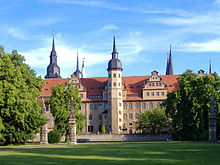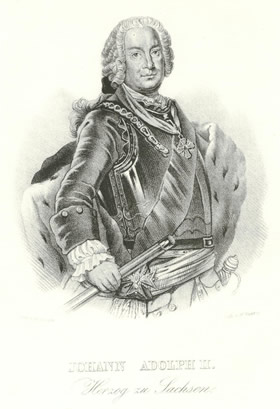
Johann Adolf II, Duke of Saxe-Weissenfels, was the last duke of Saxe-Weissenfels-Querfurt and a member of the House of Wettin. He was also a commander in the Saxon army.

Christian I of Saxe-Merseburg, was the first duke of Saxe-Merseburg and a member of the House of Wettin.
Christian II of Saxe-Merseburg, was a duke of Saxe-Merseburg and member of the House of Wettin.
Christian III Maurice, Duke of Saxe-Merseburg, was a duke of Saxe-Merseburg and member of the House of Wettin.
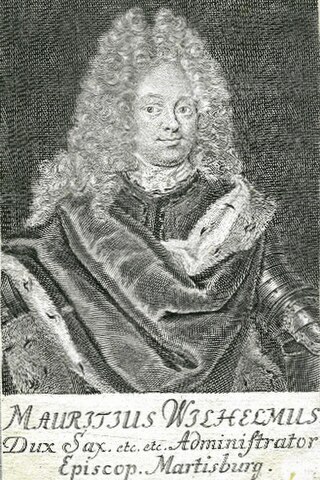
Maurice Wilhelm, Duke of Saxe-Merseburg was a duke of Saxe-Merseburg and member of the House of Wettin.
August, Duke of Saxe-Merseburg-Zörbig, was a German prince and member of the House of Wettin.

Heinrich, Duke of Saxe-Merseburg, was a duke of Saxe-Merseburg and member of the House of Wettin.

Maurice of Saxe-Zeitz was a duke of Saxe-Zeitz and member of the House of Wettin.
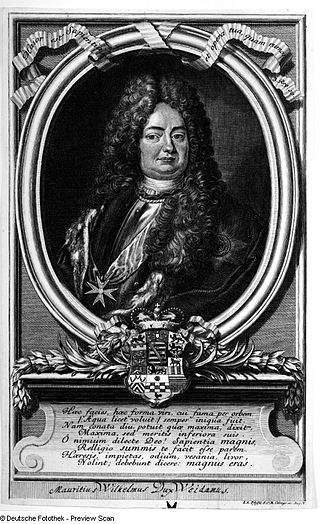
Moritz Wilhelm, a member of the Saxon House of Wettin, was the second and last Duke of Saxe-Zeitz from 1681 until his death.
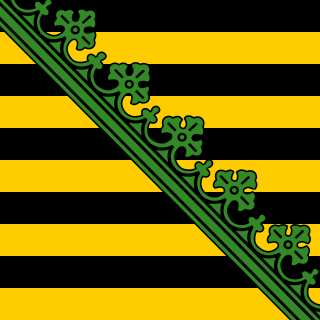
Saxe-Weissenfels was a duchy of the Holy Roman Empire from 1656/7 until 1746 with its residence at Weißenfels. Ruled by a cadet branch of the Albertine House of Wettin, the duchy passed to the Electorate of Saxony upon the extinction of the line.
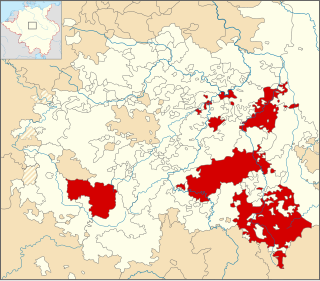
The Duchy of Saxe-Zeitz was a territory of the Holy Roman Empire established in 1656–57 as a secundogeniture of the Electoral Saxon house of House of Wettin. Its capital was Zeitz. The territory fell back to the Wettin electoral line in 1718.

Erdmuthe Dorothea of Saxe-Zeitz was the wife of Duke Christian II of Saxe-Merseburg, whom she married on 14 October 1679 at Moritzburg Palace in Zeitz.
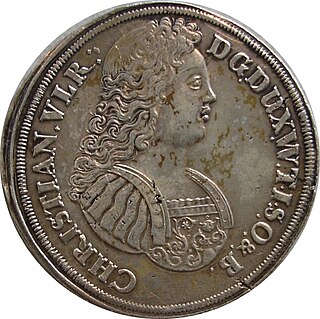
Duke Christian Ulrich I of Württemberg-Oels was a German nobleman. He was the ruling Duke of Württemberg-Bernstadt from 1669 to 1697 and then the ruling Duke of Oels-Württemberg from 1697 until his death.

Dorothea Maria of Saxe-Weimar, was by birth Duchess of Saxe-Weimar from the Ernestine branch of the House of Wettin and by marriage Duchess of Saxe-Zeitz.

Johanna Magdalena of Saxe-Altenburg was a member of the House of Wettin. She was a Duchess of Saxe-Altenburg by birth and by marriage a Duchess of Saxe-Weissenfels-Querfurt.

Princess Christiana of Schleswig-Holstein-Sonderburg-Glücksburg, often referred to as Christiane was the consort of Christian I, Duke of Saxe-Merseburg, who was the ruling Duke of Saxe-Merseburg from 1650 until his death.

Louise Elisabeth of Württemberg-Oels, was a Duchess of Württemberg-Oels by birth and by marriage Duchess of Saxe-Merseburg-Lauchstädt. In 1709, she revived the Ducal Württemberg-Oels Order of the Skull as a chivalric order for ladies.
Sophie Angelika of Württemberg-Oels, was a Duchess of Württemberg-Oels by birth and by marriage She became the Duchess of Saxe-Zeitz-Pegau-Neustadt.
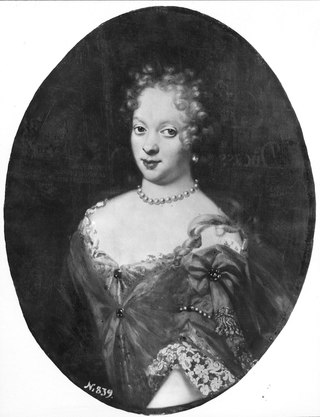
Elisabeth of Mecklenburg-Güstrow, was a German noblewoman member of the House of Mecklenburg and by marriage Duchess of Saxe-Merseburg-Spremberg and Saxe-Merseburg.


